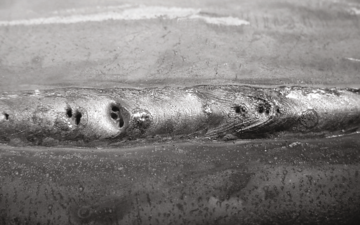The Science Behind Porosity: A Comprehensive Guide for Welders and Fabricators
Comprehending the complex systems behind porosity in welding is essential for welders and makers striving for flawless craftsmanship. As metalworkers dig right into the depths of this sensation, they discover a world regulated by various factors that affect the formation of these minuscule spaces within welds. From the composition of the base products to the intricacies of the welding process itself, a multitude of variables conspire to either exacerbate or ease the presence of porosity. In this detailed overview, we will untangle the science behind porosity, discovering its results on weld high quality and introduction progressed strategies for its control. Join us on this trip with the microcosm of welding flaws, where accuracy satisfies understanding in the search of remarkable welds.
Understanding Porosity in Welding
FIRST SENTENCE:
Evaluation of porosity in welding discloses essential understandings right into the integrity and high quality of the weld joint. Porosity, identified by the presence of dental caries or spaces within the weld steel, is an usual worry in welding procedures. These gaps, otherwise properly attended to, can compromise the architectural integrity and mechanical buildings of the weld, causing prospective failings in the ended up item.

To detect and measure porosity, non-destructive screening methods such as ultrasonic screening or X-ray examination are usually utilized. These techniques allow for the recognition of internal problems without endangering the honesty of the weld. By examining the dimension, shape, and distribution of porosity within a weld, welders can make educated choices to improve their welding procedures and achieve sounder weld joints.

Aspects Influencing Porosity Development
The incident of porosity in welding is influenced by a myriad of factors, varying from gas shielding efficiency to the intricacies of welding criterion setups. Welding parameters, consisting of voltage, present, travel speed, and electrode kind, additionally effect porosity formation. The welding method employed, such as gas steel arc welding (GMAW) or protected steel arc welding (SMAW), can influence porosity development due to variants in warm distribution and gas insurance coverage - What is Porosity.
Results of Porosity on Weld High Quality
Porosity formation considerably compromises the structural integrity and mechanical buildings of welded joints. When porosity exists in a weld, it creates gaps or tooth cavities within the material, lowering the general stamina of the joint. These spaces work as anxiety concentration factors, making the weld a lot more at risk to breaking and failure under look at more info tons. The existence of porosity likewise deteriorates the weld's resistance to corrosion, as the trapped air or gases within the spaces can react with the surrounding atmosphere, leading to degradation gradually. Furthermore, porosity can impede the weld's ability to hold up against pressure or influence, further jeopardizing the general high quality and reliability of the bonded framework. In vital applications such as aerospace, auto, or structural constructions, where safety and resilience are extremely important, the detrimental effects of porosity on weld top quality can have severe effects, emphasizing the significance of lessening porosity through correct welding strategies and procedures.
Techniques to Lessen Porosity
Additionally, making use of the suitable welding parameters, such as the appropriate voltage, existing, and take a trip speed, is critical in stopping porosity. Preserving a constant arc length and angle during welding likewise helps reduce the possibility of porosity.

Furthermore, choosing the right protecting gas and maintaining correct gas flow rates are essential in minimizing porosity. Using the proper welding method, such as back-stepping or employing a weaving motion, can likewise aid disperse warm evenly and decrease the possibilities of porosity formation. Ensuring proper air flow in the welding atmosphere to remove any possible sources of contamination is vital for achieving porosity-free welds. By applying these methods, welders can efficiently reduce porosity and generate top notch welded joints.

Advanced Solutions for Porosity Control
Executing sophisticated modern technologies and ingenious approaches plays an essential duty in attaining premium control over porosity in welding procedures. One advanced service is making use of innovative gas mixes. Shielding gases like helium or a blend of argon and hydrogen can help in reducing porosity by offering far better arc stability and improved gas insurance coverage. In addition, utilizing innovative welding strategies such as pulsed MIG welding or changed atmosphere welding can additionally assist alleviate porosity concerns.
Another advanced solution involves making use of advanced welding devices. For circumstances, utilizing devices with built-in attributes like waveform control and advanced go now source of power can improve weld top quality and minimize porosity risks. Moreover, the application of automated welding systems with accurate control over specifications can considerably decrease porosity issues.
Moreover, including sophisticated tracking and assessment modern technologies page such as real-time X-ray imaging or automated ultrasonic screening can assist in discovering porosity early in the welding process, enabling prompt corrective actions. Overall, incorporating these advanced services can greatly boost porosity control and boost the overall quality of welded parts.
Final Thought
Finally, recognizing the science behind porosity in welding is essential for welders and fabricators to create top quality welds. By determining the variables affecting porosity formation and carrying out techniques to decrease it, welders can enhance the total weld quality. Advanced options for porosity control can additionally boost the welding process and make certain a strong and reputable weld. It is essential for welders to continually educate themselves on porosity and apply best practices to accomplish optimum results.